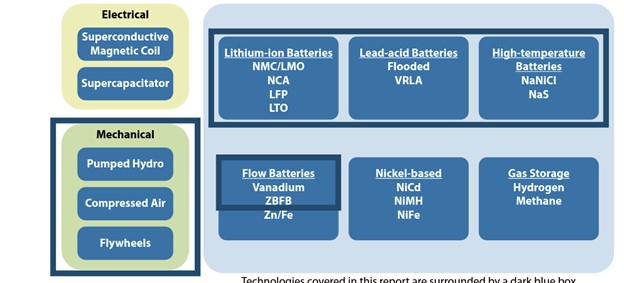
Energy storage technologies, store energy either as electricity or heat/cold, so it can be used at a later time. With the growth in electric vehicle sales, battery storage costs have fallen rapidly due to economies of scale and technology improvements. With the falling costs of solar PV and wind power technologies, the focus is increasingly moving to the next stage of the energy transition and an energy systems approach, where energy storage can help integrate higher shares of solar and wind power.
Energy storage technologies can provide a range of services to help integrate solar and wind, from storing electricity for use in evenings, to providing grid-stability services.
Wider deployment and the commercialisation of new battery storage technologies has led to rapid cost reductions, notably for lithium-ion batteries, but also for high-temperature sodium-sulphur (“NAS”) and so-called “flow” batteries. Small-scale lithium-ion residential battery systems in the German market suggest that between 2014 and 2020, battery energy storage systems (BESS) prices fell by 71%, to USD 776/kWh. With their rapid cost declines, the role of BESS for stationary and transport applications is gaining prominence, but other technologies exist, including pumped hydro, flywheels, and thermal energy stores.
Electricity storage technologies

IRENA is tracking the current costs and performance of BESS and is monitoring how the value of these systems in different applications and international markets is likely to evolve over time with increasing self-consumption of rooftop solar PV, the provision of grid services such as frequency regulation or ramping needs, as well as peak power demand shaving in industry and alike.













